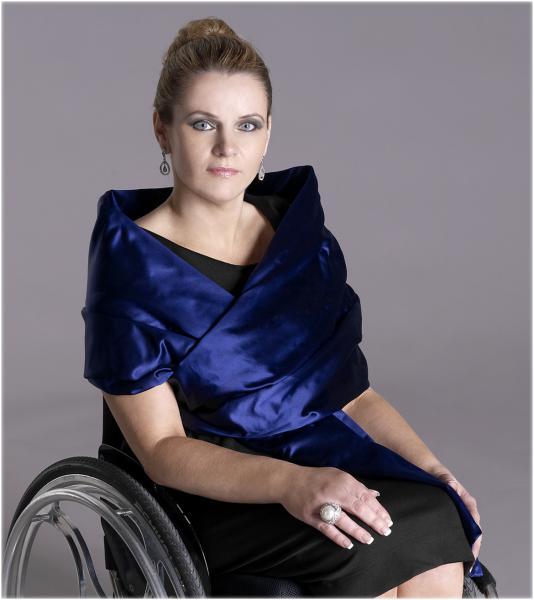When Ann Olivier was diagnosed with multiple sclerosis (MS), she had no idea that it would launch a new career—as a clothing designer.
Because of her limited range of mobility, she found it challenging not only to get dressed but also to find clothing suitable for a person in a wheelchair. Fashion simply did not have design in mind for people with disabilities.
One evening when she was going to the opera, her gown gathered uncomfortably in her lap as she sat in her wheelchair.
This pivotal moment inspired a London-based clothing line designed for women with disabilities called Xeni.
Olivier explained the significance behind the name of her brand in an interview with The Epoch Times.
“My best friend is Greek. Xeni means foreigner or valued visitor in Greek. I am seeking to wrest the root back from xenophobia to xenophilia,” she said.
Design is not foreign to Olivier. She worked as an architect prior to her debilitating illness but was forced to leave her job as MS limited the mobility in her hands. She uses a wheelchair to get around.
Now Olivier uses her creative skills to develop unique cuts and features that are not available in the marketplace.
She describes the thoughtful innovations behind Xeni’s styles, which address the needs that often confront disabled women: closures that facilitate dressing independently, garments that are wheelchair-friendly, and consideration of other medical devices that may obstruct clothing.
For people with limited dexterity, Olivier steers away from buttons and zippers and prefers incorporating magnets to open and close garments.
“I use the hunting properties that magnets give to induce the two sides of the garments to hunt each other out and close without hand intervention,” she explained.
While also suitable for women who can stand, the clothing is especially designed for women who use wheelchairs.
“I offer dresses, tunics, jackets, and coats that can be put on independently by women who use wheelchairs because they don’t come under the seat,” Olivier said.






